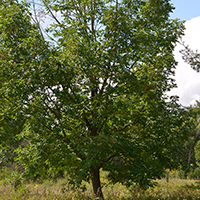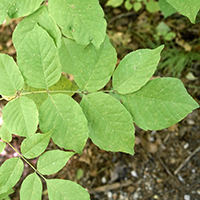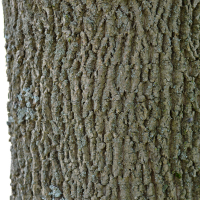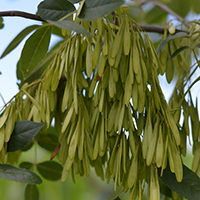What white ash looks like
Size and shape
- Reaches 30 metres high.
Leaves
- Opposite (symmetrical) compound leaves with 5 to 9, typically 7, leaflets.
- Dark green on top and very pale below.
- Leaves turn reddish-purple in fall and leave a notched scar on the branch when they fall.
Bark
- Grey in colour.
- Mature bark has a unique diamond pattern texture.
Fruit
- Small, winged fruit (seeds) that hang in clusters.
Where white ash is found
White ash is a common species in Ontario’s deciduous forests. It is found throughout Southern Ontario and north to Lake Nipissing and Sault Ste. Marie.
What you need to know to grow white ash
- Moisture: prefers moist soils.
- Soil: prefers well-drained rich soils.
- Shade: prefers full sun but tolerates partial shade.
- Cautions:
- Planting hole size: Dig a large enough hole for the roots to grow rapidly without too much strain. If planting in clay soil, the hole will need to be at least 6 times the width of the root ball.
- Emerald ash borer : An invasive insect whose larvae feed on the inner trunk and cause tree death. Signs include D-shaped exit holes and vertical cracks in the trunk, as well as visible crown death.
Benefits and uses of white ash
Wildlife benefits
Some bird species eat the winged seeds of white ash.
Commercial uses
Wood from white ash is commonly used to make:
- Sporting equipment such as tennis rackets, baseball bats, hockey sticks, paddles and oars
- furniture and cabinetry
- crates
Fun facts about white ash
- It is the largest of Ontario’s native ash species.
Updated: November 22, 2023
Published: July 18, 2014



